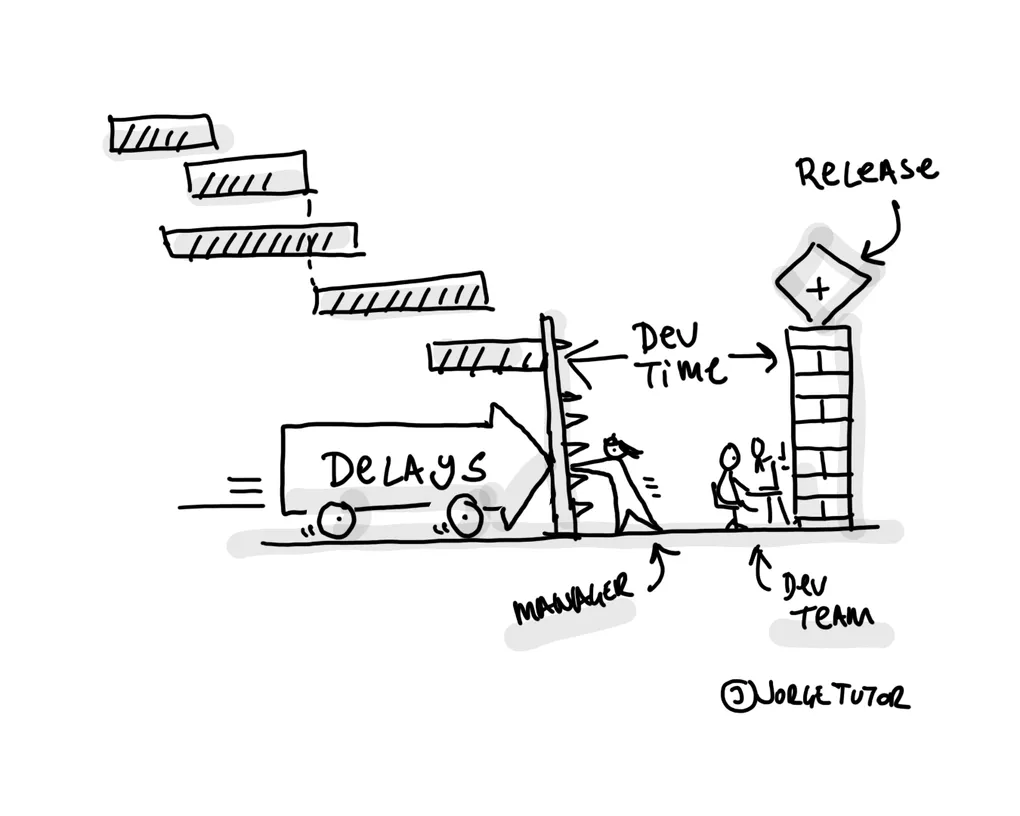Beyond the Gantt Chart: A Call for Respect in Project Planning
Are you treating your developers like magicians? See how dev time is miscalculated in Gantt charts and why this flawed approach leads projects to failure.

For years, I’ve watched the same story play out in meeting rooms. A project kicks off, and a beautiful Gantt chart is presented as the masterpiece plan. It looks organized and professional, but it hides a fundamental flaw that sets projects up for failure and teams up for burnout.
It’s a system that is broken, and it’s time we demand a better way.
Here’s the hidden trap in most of those plans: the development time isn’t a realistic estimate. It’s simply the time left over between when the other teams (like design and strategy) finish their work and the final, immovable deadline. There’s no consultation.
It’s a simple calculation: Deadline - Everyone Else’s Time = Development Time.
This means any delay, big or small, in the initial phases gets passed directly to the development team. They are expected to absorb every setback and still meet deadlines. It’s an unfair, high-pressure system that treats the most complex phase of a project as an afterthought. This has to stop.
A simple road trip
Think of it like planning a cross-country road trip. The plan on the map looks perfect. It says you’ll drive for 8 hours a day and arrive on Friday. This is the “happy path.” But the map doesn’t show the real world. It doesn’t show the massive traffic jam outside the city, the unexpected detour for road construction, or the flat tire you’ll get in the middle of nowhere.
A good driver can handle these problems, but they can’t magically make up for the lost time. Expecting them to is illogical. In the same way, development teams can navigate the lack of definition, last-minute requests, unexpected bugs, and common challenges of building software. Still, they cannot be expected to work miracles; moreover, when the plan was just a fantasy to begin with. The plan must account for and adapt to reality.
There is a better way
This broken process pushes teams to their limits, expecting them to overwork to compensate for poor planning they had no part in. This isn’t just inefficient; it’s not a smart move to add extra pressure on the people whose skills the project execution depends on.
But there is a better way forward. It begins with true teamwork. Instead of a relay race where one team hands off a plan to the next, we need to work like a cohesive unit from day one. When developers, designers, and clients are in the same room, talking every day, they spot the “traffic jams” and “detours” early. Problems are solved in hours, not weeks, because everyone is on the journey together.
Fair Contracts, the foundation for success
This teamwork must be backed by smarter, fairer contracts. For managers and clients, this is how you build a foundation for success:
-
Define Your Needs: The development team should provide a clear list of what they need to start. This creates shared accountability.
-
Use Smart Deadlines: Don’t commit to fixed calendar dates, commit to relative dates instead. Link your timelines to when work is completed, the required deliveries are ready, and there is a clear definition of what is expected. For example, “Work will take 2 months and will begin after the final designs are approved and functional requirements are detailed”.
-
Plan for Change: Your contract should state what happens when delays occur (trust me, they will). Either the project scope is reduced to fit the remaining time, or the budget is adjusted (covering extra work). It’s a simple, fair way to handle the unexpected, mainly when these delays were never under the development team’s control.
This is about more than just a new way to plan. It’s a call to respect the craft of software development and the people who practice it. It’s time to trade our perfect-looking fantasies for honest, collaborative, and truly successful projects.
Let’s build a better way to work together.
← Back to Blog